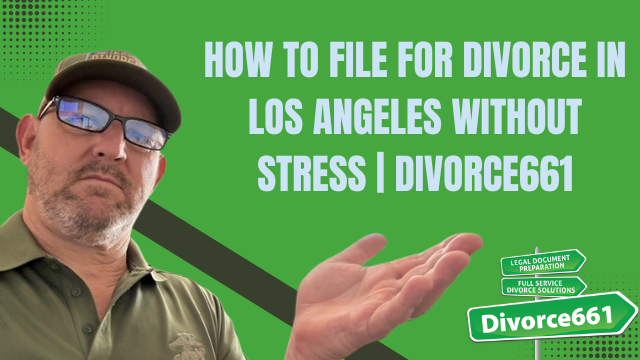How to File Divorce Online in Los Angeles Without Mistakes
Introduction
I’m Tim Blankenship of Divorce661. If you’re thinking about filing your divorce online in Los Angeles County, I want to help you avoid the frustration that comes with rejected filings. Filing sounds simple, but the court’s strict rules about form versions, formatting, and required attachments mean that even one small mistake can derail your entire case.
Why e-Filing in LA County Is Tricky
Los Angeles County’s e-filing system has very specific requirements. The court often rejects filings without detailed explanations, which leaves many people puzzled about what went wrong. Common rejection causes include using outdated forms, submitting incomplete or improperly formatted documents, and failing to properly file proof of service.
How the court responds
The court’s automated or clerical review typically focuses on technical compliance. If anything is off — wrong form version, missing signature block, incorrect file naming, or absent attachments — the filing gets rejected. Rejections cost time and can push your case weeks or even months behind.
Most Common Mistakes People Make
- Outdated or incorrect form versions: The court requires current approved versions. Even minor differences can trigger a rejection.
- Missing required documents: Attachments that the petition depends on are often omitted or uploaded in the wrong order.
- Incomplete proof of service: Proof of service must be accurate and properly filed; errors here are frequently overlooked but critical.
- Poor formatting or file naming: Files that don’t meet the court’s technical specs can be rejected without explanation.
- Using inexpensive DIY services incorrectly: Low-cost platforms sometimes produce submissions that fail the court’s strict compliance checks.
“Even one small mistake can derail your entire case.”
Real Client Example: Three Rejections, One Fix
One client came to us after being rejected three times by a low-cost online service. Their packet kept getting bounced back for technical and procedural errors. We reviewed the submissions, identified the outdated forms and missing attachments, corrected the proof of service, and refiled the same day. The court accepted the filing immediately — saving weeks of delay and a lot of unnecessary stress.
How to File Correctly: Practical Steps
Follow these steps to minimize the chance of rejection when filing divorce documents online in Los Angeles County:
- Confirm current form versions: Always download and use the court-approved, current versions of all forms.
- Assemble required attachments: Make a checklist of mandatory documents and attach them in the precise order the court expects.
- Prepare accurate proof of service: Make sure it’s completed correctly and filed in the proper format.
- Check formatting and file names: Follow the court’s technical specifications for PDFs, file sizes, and naming conventions.
- Run a final compliance review: Before submission, perform a line-by-line check against the court’s filing checklist.
Why Working with a Professional Helps
When you hire experienced professionals who know the LA County e-filing rules, you reduce the risk of rejections and delays. At Divorce661 we offer:
- Flat-fee pricing: Know the cost up front, no surprise bills.
- 100% remote service: No court visits — we handle everything electronically.
- Expert e-filing: We prepare, review, and submit your packet to meet the court’s requirements.
- Full-service support: From the petition to final judgment, we manage the process so you can move forward.
Conclusion and Next Steps
Filing online in Los Angeles County can be smooth — but only if your paperwork meets the court’s exacting standards. Learning from others’ mistakes and following a careful checklist will save you time and stress. If you want help making sure your divorce is filed right the first time, we offer a free consultation.
Visit divorce661.com to schedule your free consultation and let us handle everything from e-filing to final judgment so you can move forward confidently.






